Anabolic Warfare's Project Muscle has muscle and fat-shredding supplements of all varieties, and has been a major hit since their release in 2022. In past articles, we discussed the popular anabolic compound turkesterone, which is extracted from Ajuga turkestanica, the sole ingredient in Project Hulk.
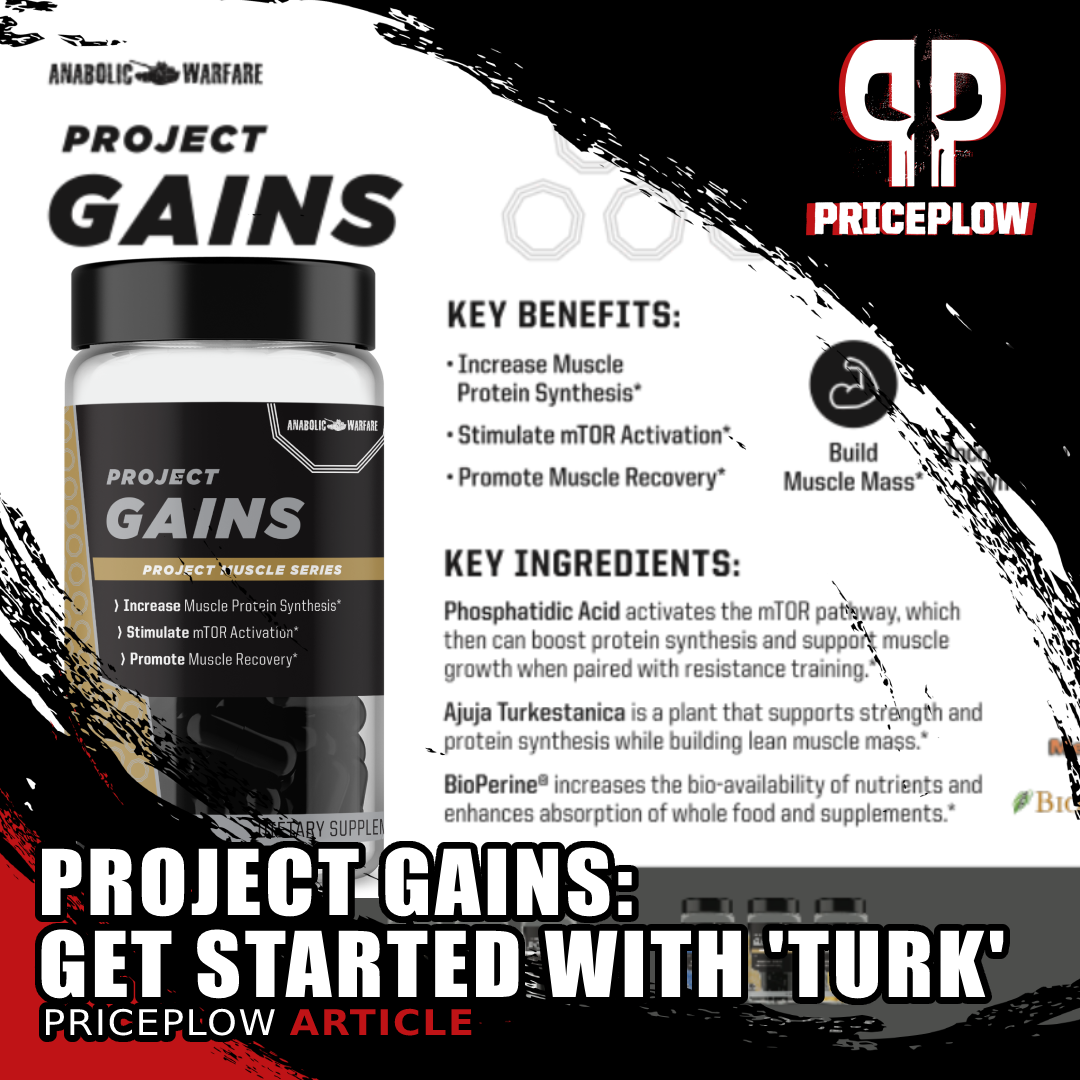
Thinking about trying out the turkesterone waters? Anabolic Warfare's Project Gains is a great way to get started!
But jumping head-first into a supplement like Project Hulk isn't for everyone. Many athletes or athletes who are a bit more on the conservative side want to give the anabolic a shot, but perhaps at a lower dose. All the better to include some other anabolic-supporting substrates.
That's exactly what we're getting into here:
Anabolic Warfare's Project Gains: A solid starter dose of A. Turkestanica
With Project Gains, Anabolic Warfare gives you a unique "natty" option to test the waters of turkesterone, at a more moderate dose. It includes 200 milligrams of A. turkestanica standardized for 10% turkesterone, which is more in line for users who aren't yet on "Project Hulk" level.
It's backed by a dose of mTOR-boosting phosphatidic acid and testicular support agent D-aspartic acid, giving the body some added tools to build muscle alongside the anabolic turkesterone-containing plant extract.
If this sounds like good way to get started, we dig into the science below:
Anabolic Warfare Project Gains – Deals and Price Drop Alerts
Get Price Alerts
No spam, no scams.
Disclosure: PricePlow relies on pricing from stores with which we have a business relationship. We work hard to keep pricing current, but you may find a better offer.
Posts are sponsored in part by the retailers and/or brands listed on this page.
Project Gains Ingredients
In a single 3-capsule serving of Project Gains from Anabolic Warfare, you get the following:
-
D-Aspartic Acid – 1,000 mg
After being ingested, the α-amino d-aspartic acid (DAA) is concentrated in your brain and gonads, where it controls your body's synthesis of hormones.[1]
Studies on rats show that treatment with DAA increases their levels of gonadotropin-releasing hormone (GnRH),[2] which sends a message for the pituitary gland to start producing luteinizing hormone (LH) and follicle-stimulating hormone (FSH).
Other studies confirm that the same effect occurs in humans. In 2009, in a randomized, double-blind, placebo-controlled study that spanned 12 days, a team of researchers gave either DAA or a placebo to a group of 23 subjects. At the end of the study period, subjects taking DAA had a 40% increase in their blood testosterone levels![3]
However, this effect does come with a couple of caveats.
The first is that the DAA dose in studies is usually higher than what we have here — around 3 grams.[3,4] Project Gains only has 1 gram, which, on its own, may not be enough to lead to a significant increase in testosterone.
Here we go, guys!! If you're having pregnancy problems, DAA does some crazy stuff with seminal numbers!!!
Caveat two is that in healthy young men, DAA may work for fertility, sperm, and testicular function, but might not boost testosterone in the first place. There's such a thing as too high of a dose too: In a study on young male weightlifters, 6 grams of DAA actually resulted in a slight decrease in testosterone.[5]
And now, here's a caveat to the caveats: a 2017 meta-analysis of all the surviving literature on DAA supplementation concluded that in animal studies, DAA consistently boosts testosterone. The failure to replicate this effect in humans, according to researchers, could be due to the limited number and poor design of DAA studies in humans.[6] In other words, more well-designed research needs to be done before anyone can draw a firm conclusion about whether DAA increases testosterone in humans (specifically healthy men).
But the animal studies are promising. Presently, you will have to review the research cited in this article and decide for yourself whether you believe in this ingredient.
We believe that it's highly likely that DAA slightly raises testosterone in men, but more importantly improves the underlying machinery for the hypothalamus-pituitary axis, which should synergize very well with the turkesterone below.
Before we get to that, it's time for another substrate to help with muscle development:
-
Mediator 50P (50% phosphatidic acid) – 600 mg
Mediator 50P is standardized to contain at least 50% phosphatidic acid (PA) by weight.
A phospholipid that stimulates muscle growth, PA activates mammalian target of rapamycin (mTOR),[7,8] a kind of master switch for human metabolism that regulates skeletal muscle mass.[9]
Generally speaking, increased mTOR activation means more muscle.[9] So once a nutritional supplement is identified as a safe and natural mTOR activator, researchers will investigate it to identify its potential as an anabolic agent. That's exactly what happened with phosphatidic acid.
The preliminary research studies have been promising. For example, a randomized, double-blind, placebo-controlled study published in 2016 found that a group of weight-trained male college students who took 750 milligrams of PA daily for eight weeks gained 5.3 pounds more muscle and added 115 more pounds to their leg press 1 rep max (or 1RM) than those who took a placebo.[7]
What's striking about this study is that by the time it reached the randomized, double-blind, placebo-controlled phase, all the participants were placed on a dietary regimen by qualified nutritionists and held accountable for their adherence to taking the supplement. One study participant's results were even removed from the data analysis when it came to light that he failed to adhere to the prescribed diet.[7]
Again, and perhaps most importantly, all participants had already been doing resistance training for at least one year prior to the start of the study - these were weight-trained athletes not subject to "rookie gains".
This matters because it means that by the time the PA trial began, dietary and resistance-training "tolerance" variables had been eliminated. In other words, their fairly large improvements in muscle size and strength can't easily be written off as "newbie gains" or their individual dietary preferences — the lifestyle factor most relevant to muscle gain.
Another 2016 study with a similar design, similar prescribed diet, and similar sample size also got a similar result: PA significantly increased lean body mass and leg-press strength compared to the placebo.[10]
However, it's important to know, these studies used a 750-milligram dose of PA. And research on the efficacy of lower doses for muscle gain is extremely sparse. We suspect there will be some benefits, but they may not be to the point of the study whose dose was higher.
However, most readers here are really here for the next ingredient:
-
Ajuga turkestanica (10% turkesterone) (whole plant) – 200 mg
This extract of Ajuga turkestanica (a type of Central-Asian flowering plant), standardized for turkesterone, is a controversial ingredient, and the keystone of Project Gains. This ingredient comes around in generational waves and here we are again, only this time armed with more data than in decades past.
A great introductory turkesterone supplement
Everyone's been talking about TURKESTERONE lately, and after Anabolic Warfare released Project Muscle, we decided to do a deep dive on it, along with other phytoecdysteroids like ecdysterone. It's more promising than most realize.
The quick take here, looking at the dosage, is that Project Gains is an incredible way for beginners or more conservative athletes to assess a lower-dose of turkesterone (and A. Turkestanica in general) before going all-in with a supplement like Anabolic Warfare's Project Hulk, which has this ingredient exclusively and at a higher dosage.
With that noted, let's dig in:
Brief introduction to phytoecdysteroids
Although extracts labeled "turkesterone" have taken the industry by storm on account of their apparent anabolic potential, there's a lot more to them than the actual turkesterone molecule, and it's actually quite promising. The active compounds inside are known as phytoecdysteroids, which govern plant reproduction and growth.[11] The first hint that they parallel our own anabolic processes is that plants synthesize them from cholesterol,[12] similar to the synthesis of human testosterone.[13]
A. turkestanica: more than turkesterone -- also includes ecdysterone
Research on the turkesterone molecule itself is limited, but it's important to note that whole-plant A. turkestanica extracts, like the kind used in Project Gains, don't just contain turkesterone -- and there's more research available on these.
For instance, A. turkestanica also contains significant amounts of another phytoecdysteroid, ecdysterone (commonly known as 20-Hydroxyecdysone or by its abbreviation, 20HE).[14] That's a good thing, because there's a big body of research on 20HE wholly indicating that it's a highly effective anabolic agent.[15-19]
Multiple teams of researchers who study 20HE have concluded it should be listed as an "S1 anabolic agent" on the World Anti-Doping Agency list of prohibited substances, yet still isn't as of 2022.[15,18] And ecdysterone isn't the only powerful compound in A. turkestanica -- there are at least eight,[20] including turkesterone.
Because researchers who study phytoecdysteroids have described turkesterone as a close analogue of 20HE,[20,21] the implication is that much of the findings on 20HE probably apply to turkesterone as well.
And it turns out that there are some pretty insane studies on the phytoecdysteroid turkesterone.
Studies on turkesterone itself
In a 1998 study conducted by researchers at the Uzbekistan Academy of Sciences, pure turkesterone went up against an anabolic steroid called methandrostenolone, otherwise known as dbol. The researchers found that in rats, turkesterone outperformed dbol for muscle growth.[22]
Read that again: Turkesterone outperformed dbol for muscle growth.[22]
That's a pretty mind-blowing result, and not the kind of thing we get to write about very often. But the context of this study highlights our frustration with the current state of turkesterone research: to find this kind of study, you have to go all the way back to 1998. Also, nobody has tried to replicate the result.
So, either turkesterone is an anabolic phenomenon that will be in literally every over-the-counter muscle building supplement within a few years, or the result of this study was anomalous or flawed.
Only time and further research will tell. But either way, there's more than just turkesterone, and we're just as excited about the whole plant extracts as we are about this one compound.
Turkesterone safety
Ecdysterone/20HE has been studied extensively-enough for experts to conclude that it's safe and non-toxic in mammals,[23] but this has not been done for the phytoecdysteroid turkesterone.
One reason why 20HE can be called safe is that unlike anabolic steroids, it doesn't have a strong affinity for androgen receptors. It actually exerts most of its effects by binding to estrogen receptors.[15,24] This means that it won't trigger the negative feedback mechanisms that anabolic steroids do. So unlike anabolic steroids, 20HE won't downregulate your body's endogenous testosterone production.
It isn't clear whether turkesterone will or will not downregulate testosterone production, and the debate in the industry on this topic is not settled. Some believe that turkesterone does have an affinity for the androgen receptor, but we still haven't seen the scientific reference supporting that claim.
Additionally, it's worth noting the dose - with 200 milligrams of A. turkestanica content standardized to 10% turkesterone, we're getting 20 milligrams of actual turkesterone and 180 milligrams of other constituents - much of which may be ecdysterone. These are not the largest doses, and that's the point -- it's a great way to dabble in the space to assess, without going overboard. If you do want more, there's always Project Hulk.
But safety profile aside, we at PricePlow are pretty bullish on the efficacy of A. turkestanica extracts and on phytoecdysteroids in general. We think this is the next big frontier for natural anabolic research in the supplement industry.
You can (and should) read more in our article titled Turkesterone and Phytoecdysteroids: Mother Nature's Anabolic Warfare. If you're not sure whether you should use turkesterone, talk to your doctor. In the article above, we do state that we'd love to see before-and-after blood tests on men using pure A. Turkestanica, and provide a list of panels that should be requested. We'll post them if we ever receive any.
-
Pine Bark Extract (95% Oligomeric Proanthocyanidins) – 150 mg
The next wave of warfare is here from Austin, TX based Anabolic Warfare -- Project Muscle! Inside we introduce the eleven incredibly unique supplements, three of which lean on epic anabolic plant-based ingredient, turkesterone.
Most often used for its ability to improve sexual function[25] by increasing nitric oxide (NO) blood levels[26-28] and upregulating endothelial nitric oxide synthase (eNOS),[26,29,30] pine bark extract (PBE) has also been shown to raise testosterone.
In one double-blind, randomized, placebo-controlled study, middle-aged men who supplemented with PBE got 19% higher levels of total testosterone than controls who took the placebo.[31]
The PBE also seems to inhibit matrix metalloproteinases (MMPs),[32] a group of enzymes that remodel your body's tissues after an injury. Overexpression of MMPs is linked to stiffening of lung tissue,[33] so they seem to have a generally pro-fibrotic effect. Also, MMPs may stiffen arterial walls over time,[34] which, as we all know, is a very bad thing.
So a little bit of PBE might help keep your blood vessels youthful, flexible, and strong as you push them to their limit during your workouts. This also leads us to believe that on training days, Project Gains should be used pre-workout -- you might as well get some extra muscle pump action from the nitric oxide support here!
-
BioPerine Black Pepper Fruit Extract (95% Piperine) – 5 mg
So one thing you might have noticed about Project Gains is that the doses used are purposefully low, which is why Anabolic Warfare finishes-off the stack with BioPerine.
BioPerine is a bioavailability enhancer,[35] which can vastly increase the absorption of whatever other ingredients you take it with.
So keep in mind that because BioPerine is present in this formula, you are probably getting far more out of these doses than the research literature might suggest.
BioPerine is a black pepper extract that's standardized for piperine, an antioxidant that blocks the action of stomach enzymes that might break down ingredients before they can be fully utilized by your body.[35]
Ultimately this maximizes the bang you're getting for your buck, as more of the supplement will actually be used by your body.
Piperine has independent metabolic effects
Piperine also upregulates glucose transporter 4 (GLUT4), which takes glucose out of your blood and moves it into cells where it can be burned and converted into useful energy.[36] Piperine also increases insulin sensitivity and helps defat the liver,[37] an organ where fat definitely does not belong and can cause serious disease if it builds up.
Piperine is also a potent antioxidant.[38]
Conclusion: A great way to test the turkesterone waters
The major ingredients in this formula are promising. "Turkesterone", the industry's highly misleading name for whole-plant extracts of Ajuga turkestanica (Anabolic Warfare is not guilty of conflating the two, though), may even prove to be a blockbuster, history-changing ingredient in the future.
The research on turkesterone is far from conclusive, but we're already very confident in the ecdysterone within A. Turkestanica as well as its other constituents - and those likely make up even more of the supplement in the first place.
Project Gains is for a consumer who's interested in experimenting with the cutting-edge of nutritional supplementation, but at beginner's doses that will allow you to assess if you want to go further. And if you see or feel any level of results, it's time to setup up to Project Hulk after that.
Anabolic Warfare Project Gains – Deals and Price Drop Alerts
Get Price Alerts
No spam, no scams.
Disclosure: PricePlow relies on pricing from stores with which we have a business relationship. We work hard to keep pricing current, but you may find a better offer.
Posts are sponsored in part by the retailers and/or brands listed on this page.
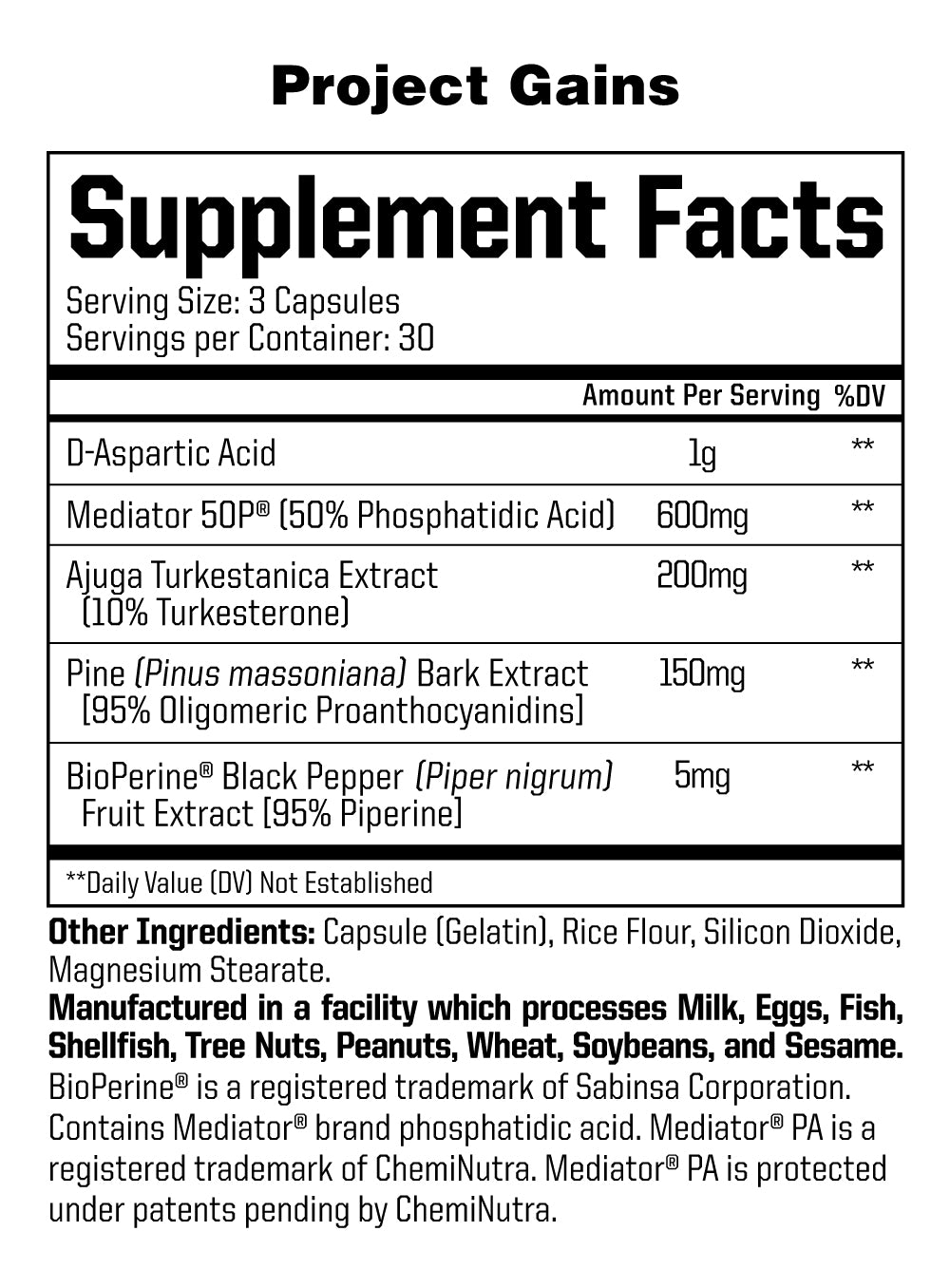
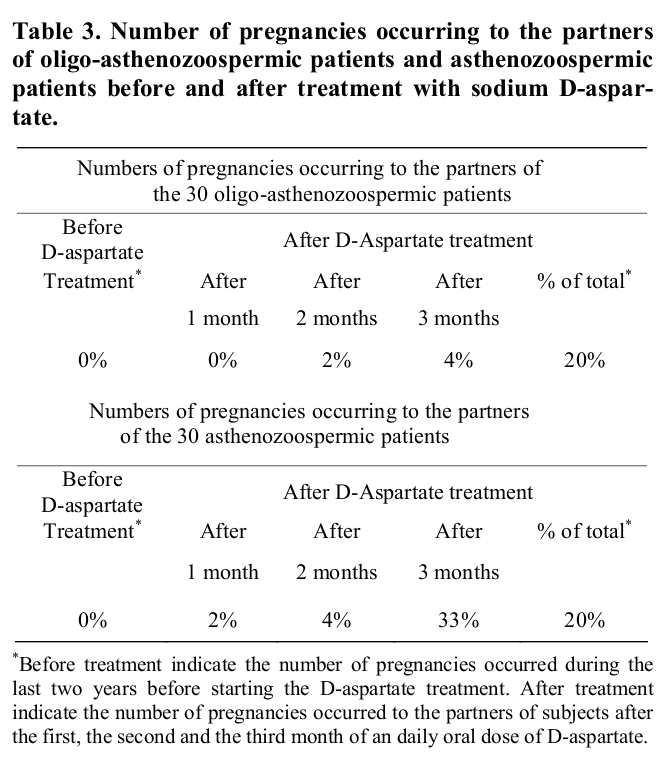
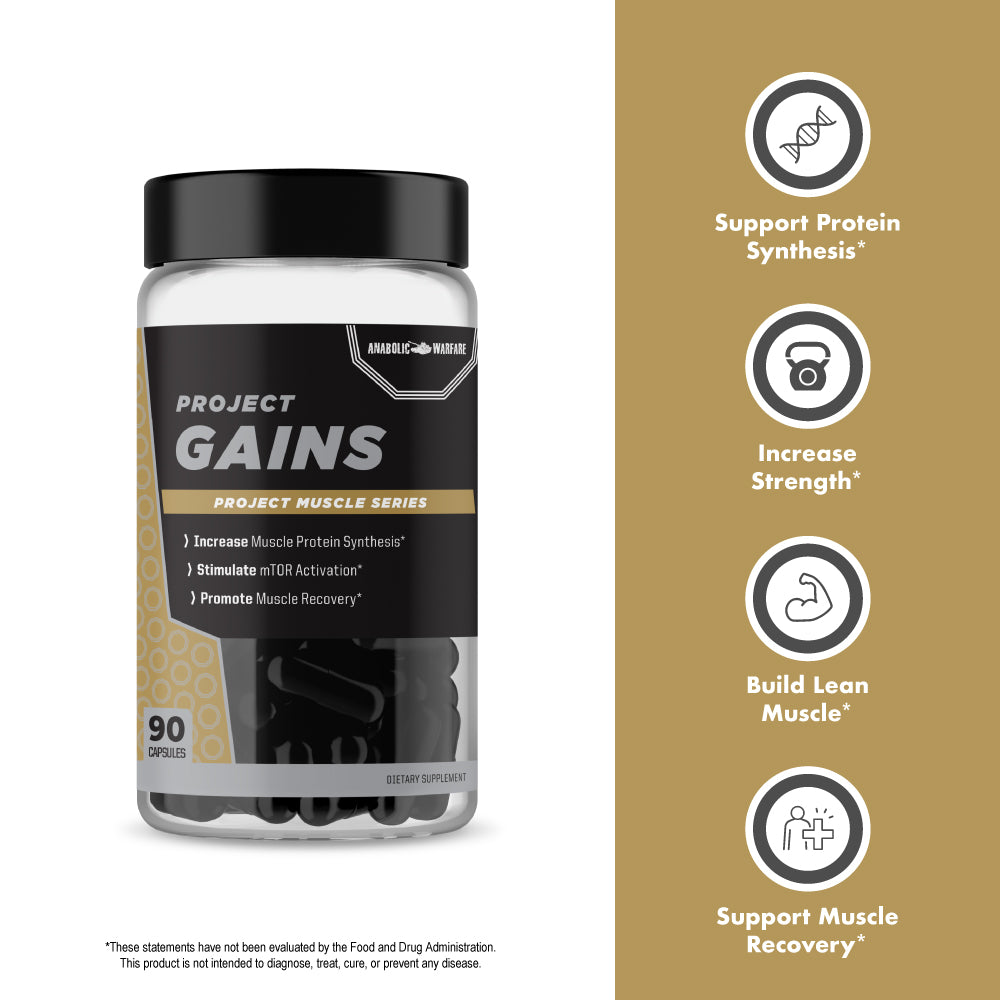
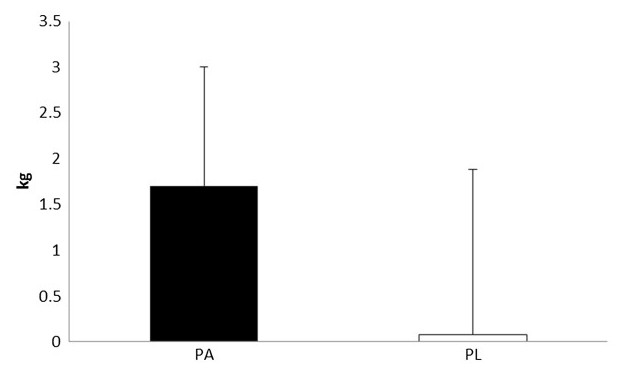
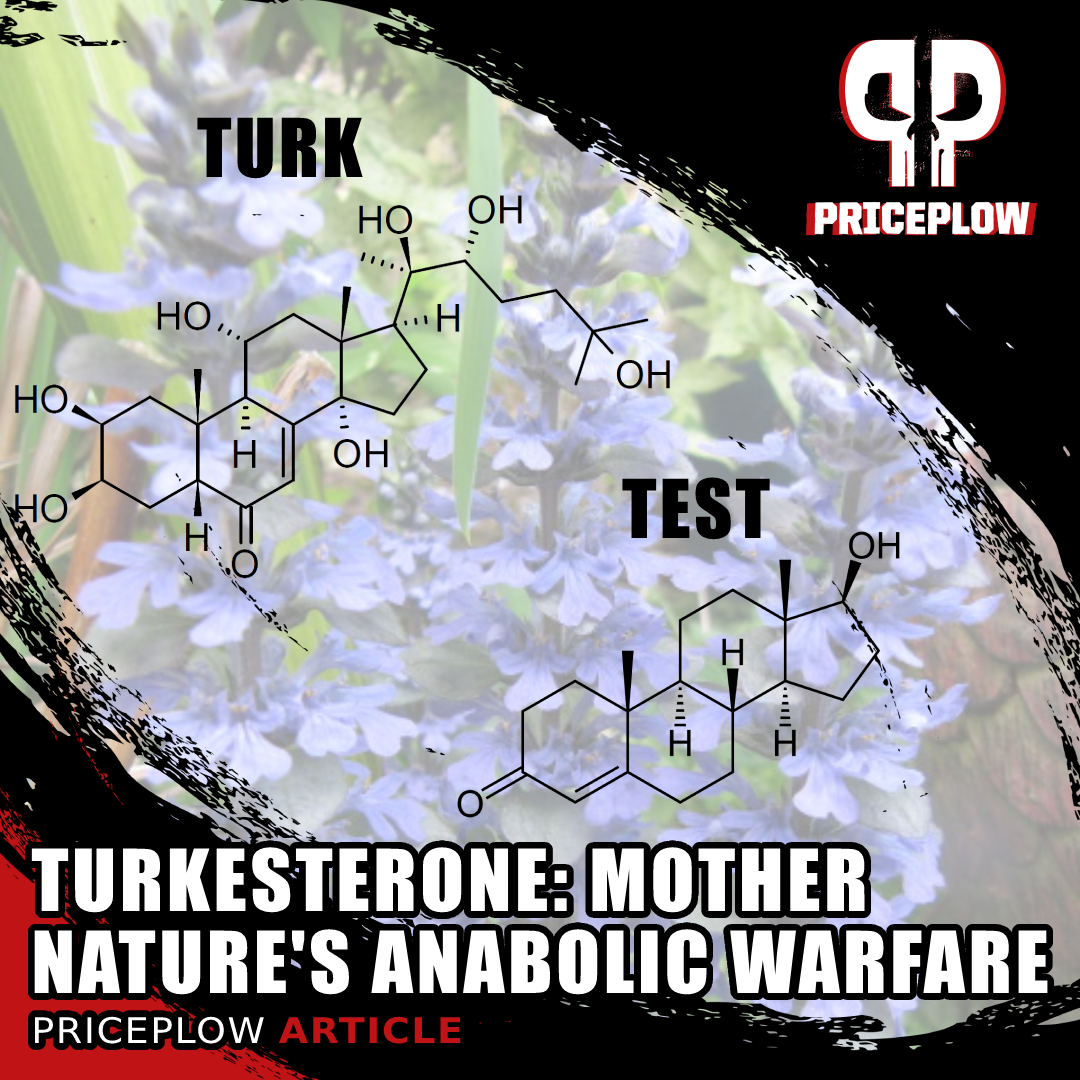
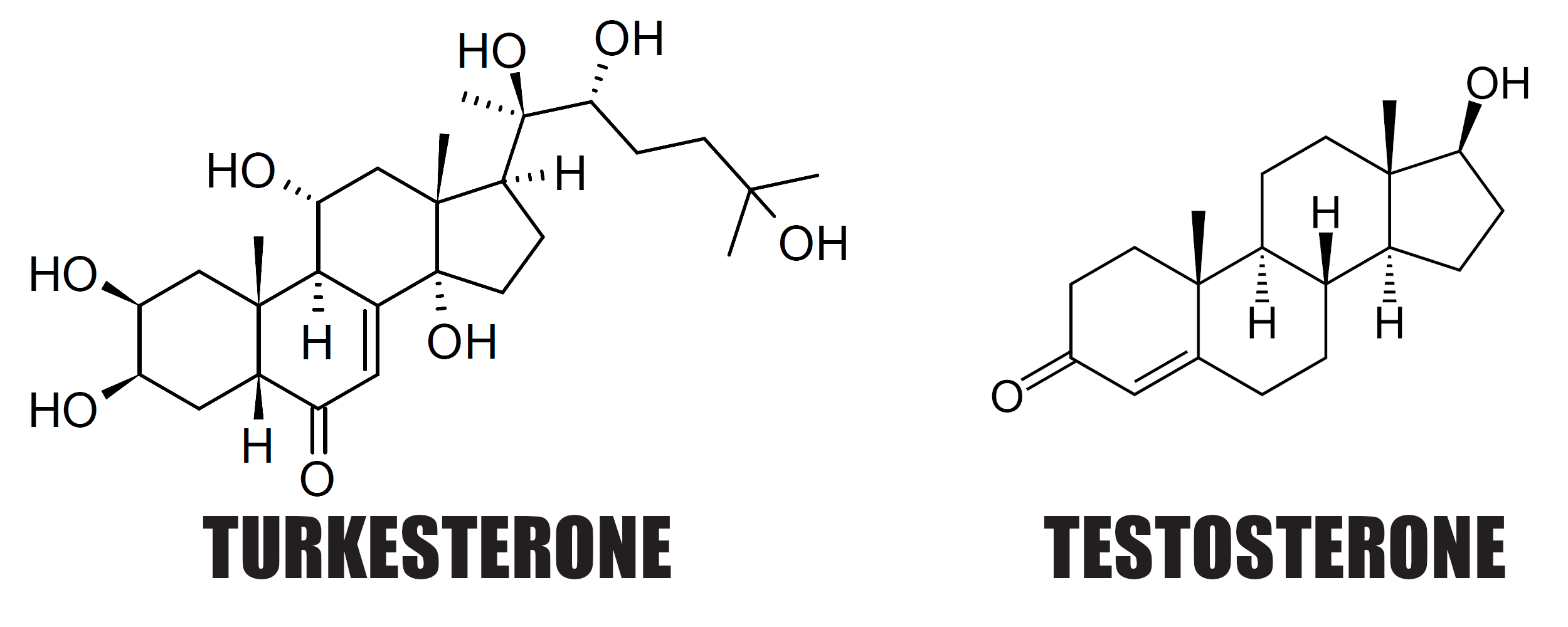
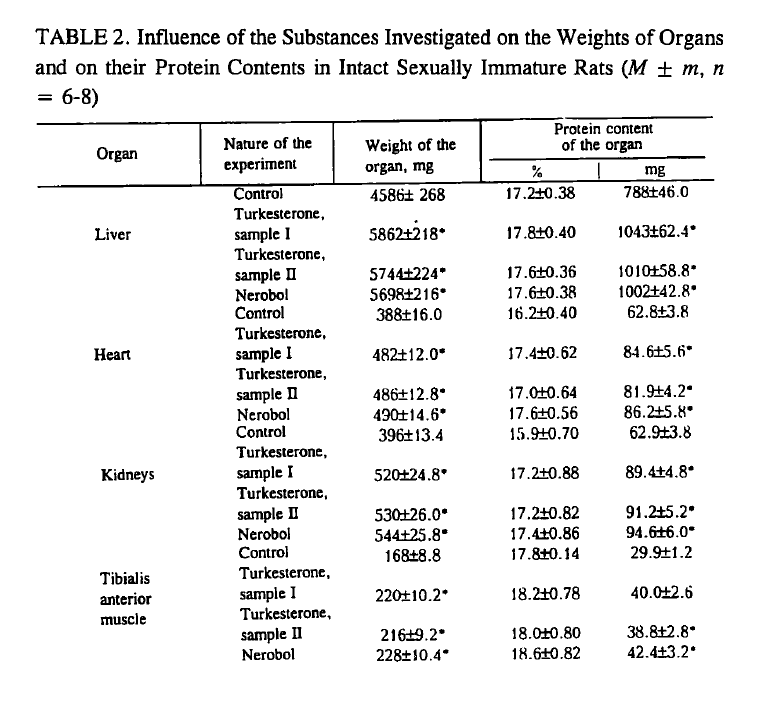


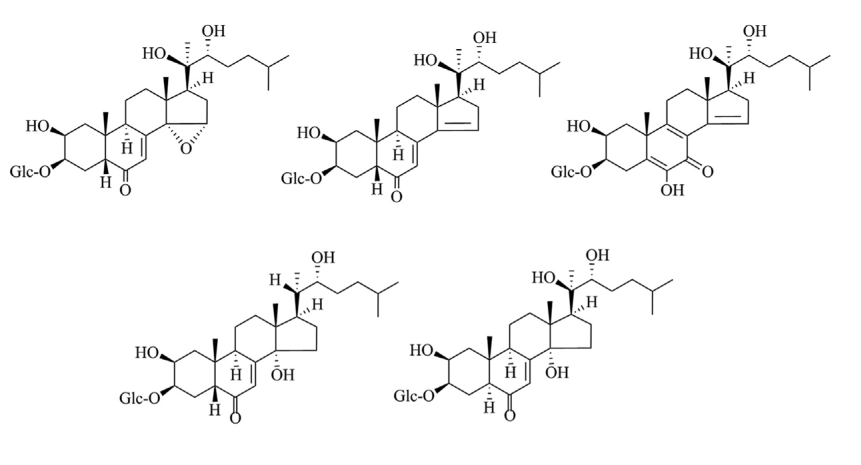
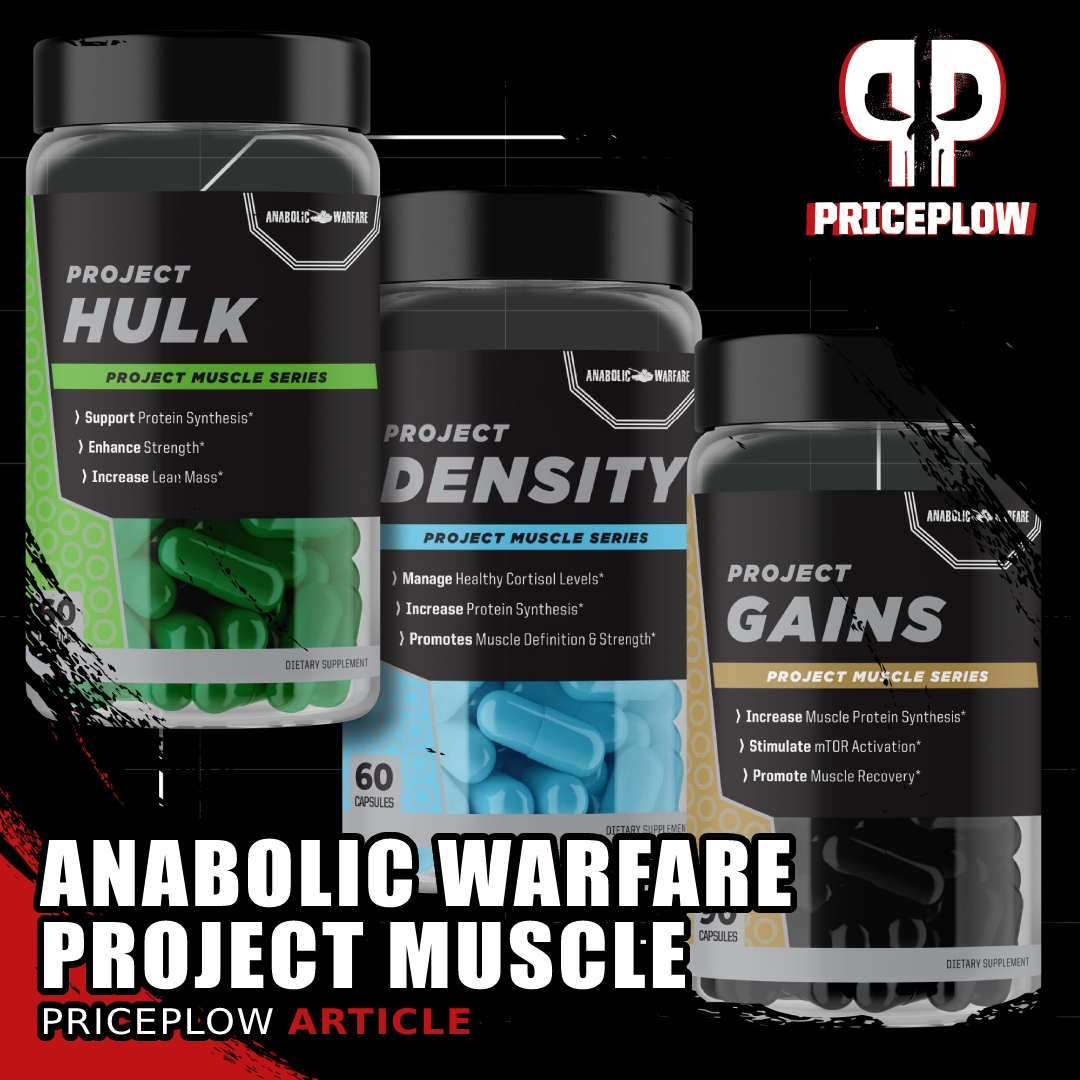
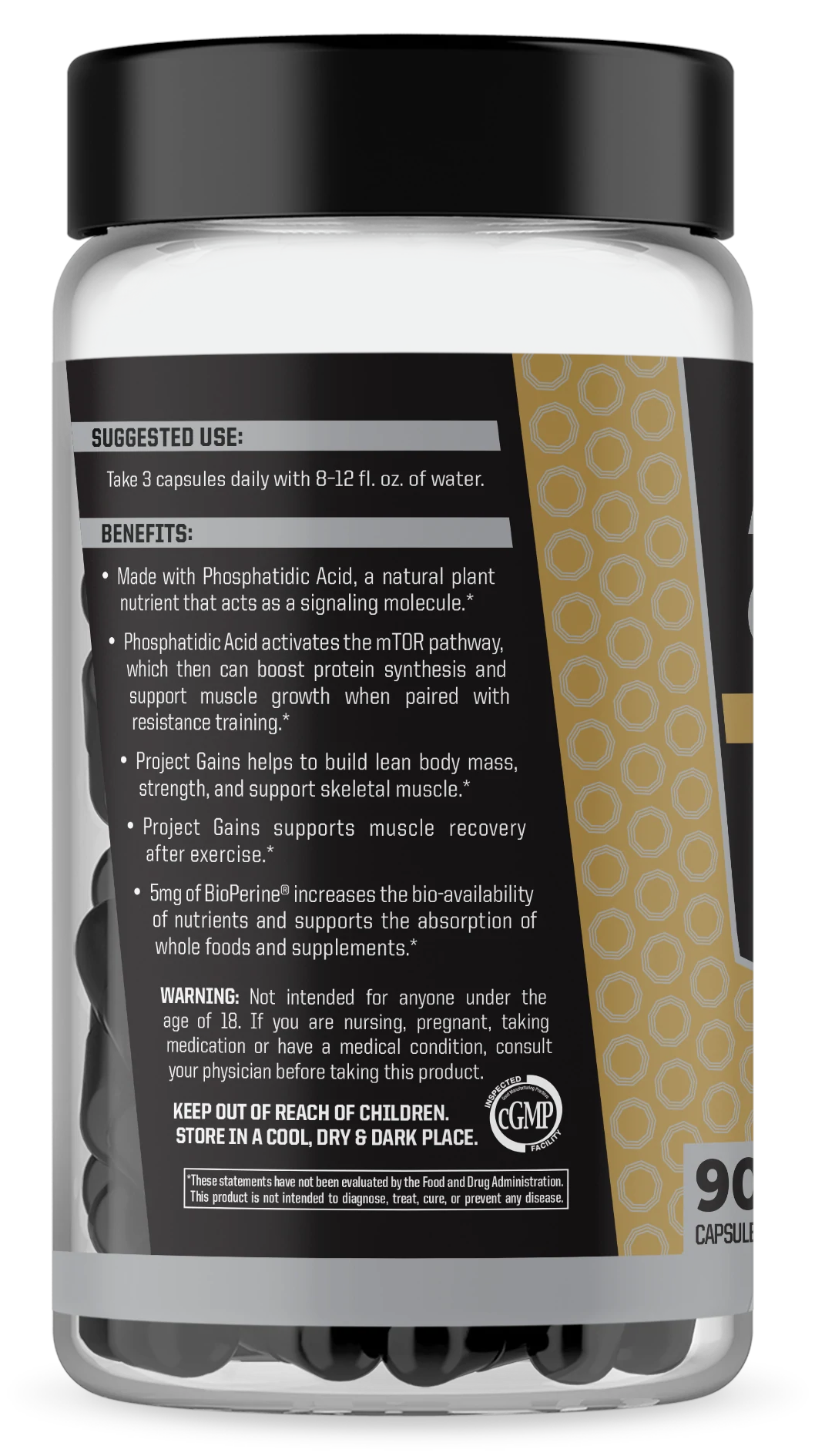
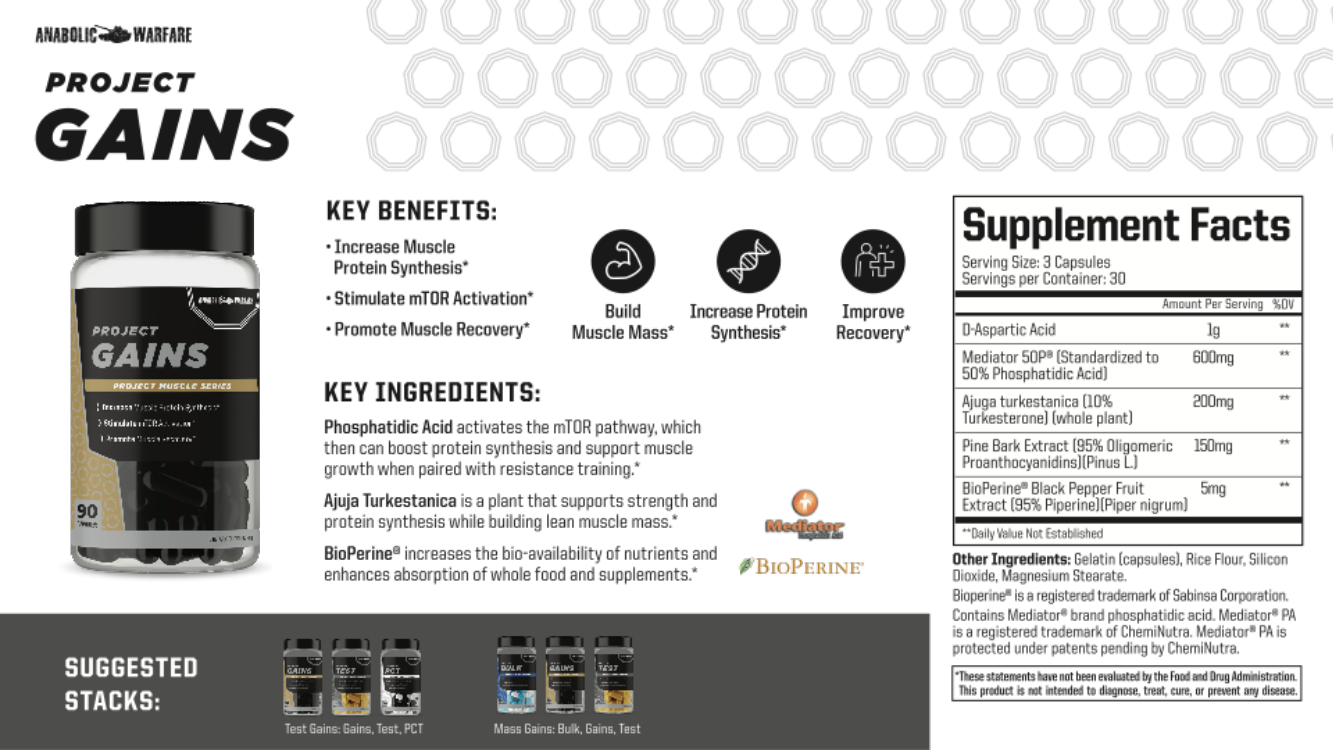


Comments and Discussion (Powered by the PricePlow Forum)